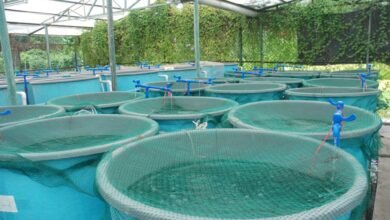Sustainable Progress: Green Energy’s Role In Environmental Preservation

In today’s rapidly evolving world, the quest for sustainable progress has never been more crucial. As we grapple with the consequences of climate change and environmental degradation, the role of green energy solutions stands out as a beacon of hope. These renewable sources of energy not only offer an alternative to fossil fuels but also pave the way for a cleaner, greener future. Let’s delve deeper into the significance of green energy in environmental preservation.
The Urgency Of Environmental Preservation
The state of our planet is a cause for concern. From rising global temperatures to melting glaciers and dwindling biodiversity, the signs of environmental distress are all around us. The need for action has never been more urgent. Environmental preservation is not just about saving trees or protecting endangered species; it’s about safeguarding the very ecosystem that sustains all life on Earth.
The Promise Of Green Energy
Green energy solutions, such as solar, wind, hydro, and geothermal power, offer a promising alternative to traditional fossil fuels. Unlike coal, oil, and natural gas, these renewable sources of energy are abundant, sustainable, and emit little to no greenhouse gases. Let’s explore some of the key benefits of embracing green energy.
Reduced Carbon Footprint
One of the most compelling reasons to adopt green energy solutions is their ability to reduce our carbon footprint. Unlike fossil fuels, which release large amounts of CO2 and other greenhouse gases when burned, renewable energy sources produce clean energy without contributing to global warming. By transitioning to green energy, we can significantly lower our carbon emissions and mitigate the impacts of climate change.
Energy Security And Independence
Relying on imported fossil fuels can make countries vulnerable to geopolitical tensions and price fluctuations. Green energy solutions offer a path to energy security and independence. By harnessing the power of the sun, wind, and water, countries can produce their own clean energy, reducing dependence on foreign oil and gas.
Job Creation And Economic Growth
The transition to green energy is not just good for the environment; it’s also a boon for the economy. Investing in renewable energy infrastructure creates jobs in manufacturing, construction, and maintenance. Moreover, as the green energy sector continues to grow, it can drive economic growth and innovation, paving the way for a more sustainable and prosperous future.
Preservation Of Natural Resources
Traditional energy sources like coal and oil require the extraction and consumption of finite natural resources. This extraction process can have devastating impacts on ecosystems, including deforestation, habitat destruction, and water pollution. Green energy solutions, on the other hand, harness the power of renewable resources like sunlight, wind, and water without depleting natural reserves.
Challenges And Opportunities
While the benefits of green energy are clear, transitioning to a renewable energy future is not without its challenges. From technological barriers to policy hurdles, there are numerous obstacles that need to be overcome. However, these challenges also present opportunities for innovation and collaboration.
Technological Innovation
Advancements in green energy technologies are happening at a rapid pace. From more efficient solar panels to innovative energy storage solutions, technological innovation is making green energy more accessible and affordable than ever before. Continued investment in research and development can further accelerate the adoption of green energy solutions.
Policy Support
Government policies and regulations play a crucial role in shaping the energy landscape. By implementing supportive policies such as tax incentives, feed-in tariffs, and renewable energy targets, policymakers can incentivize investment in green energy infrastructure and facilitate its widespread adoption.
Public Awareness And Education
Raising public awareness about the benefits of green energy is key to driving demand and accelerating the transition. Education campaigns, community outreach programs, and public-private partnerships can help inform consumers and businesses about the importance of embracing renewable energy sources.
Conclusion
The path to environmental preservation lies in our ability to embrace sustainable solutions and reduce our reliance on fossil fuels. Green energy solutions offer a viable and promising alternative to traditional energy sources, providing a pathway to a cleaner, greener future for generations to come.
By investing in renewable energy infrastructure, supporting technological innovation, and fostering public awareness, we can pave the way for a more sustainable and prosperous future. It’s time to harness the power of green energy and make a positive impact on our planet. Together, we can build a world where environmental preservation and progress go hand in hand.
Frequently Asked Questions
What Is Green Energy?
Green energy refers to renewable energy sources that are environmentally friendly and produce little to no greenhouse gas emissions. Examples include solar, wind, hydro, and geothermal power.
How Does Green Energy Help In Environmental Preservation?
Green energy solutions reduce our reliance on fossil fuels, which emit harmful greenhouse gases when burned. By using renewable energy sources, we can lower carbon emissions, mitigate climate change impacts, and preserve natural resources.
Are Green Energy Solutions Cost-Effective?
While the initial investment in green energy infrastructure can be higher, the long-term operational costs are often lower than traditional energy sources. Additionally, as technology advances and economies of scale are achieved, the cost of green energy continues to decrease.
What Are The Challenges Of Transitioning To Green Energy?
Some challenges of transitioning to green energy include technological barriers, policy hurdles, and initial investment costs. However, these challenges present opportunities for innovation and collaboration to overcome them.
How Can I Contribute To Green Energy Adoption?
You can contribute to green energy adoption by installing solar panels on your property, supporting policies that promote renewable energy, reducing energy consumption through energy-efficient practices, and raising awareness about the benefits of green energy in your community.
Is Green Energy Reliable And Consistent?
Green energy sources like solar and wind can be intermittent, depending on weather conditions. However, advancements in energy storage technologies and grid management systems are improving the reliability and consistency of renewable energy sources.



